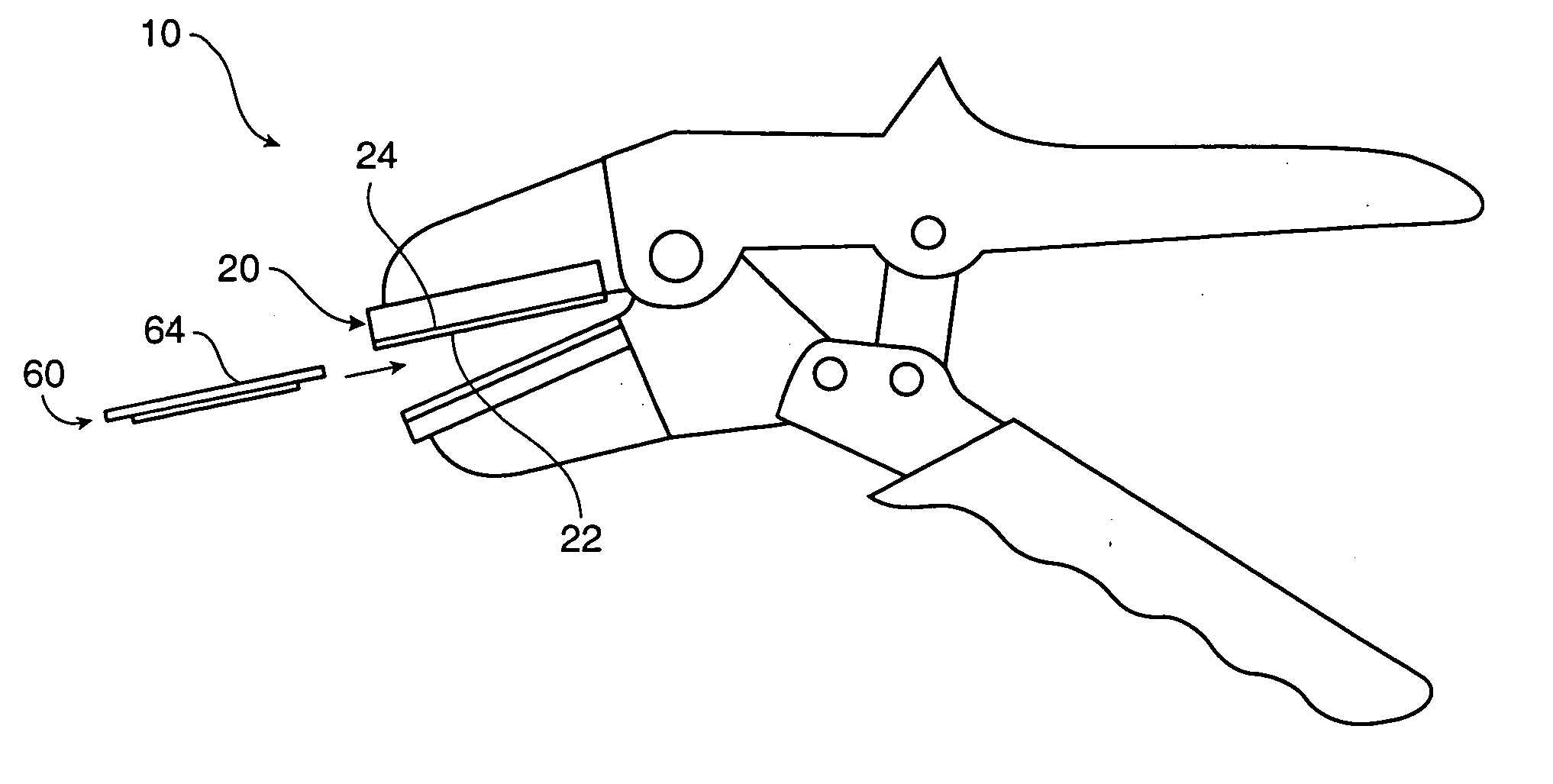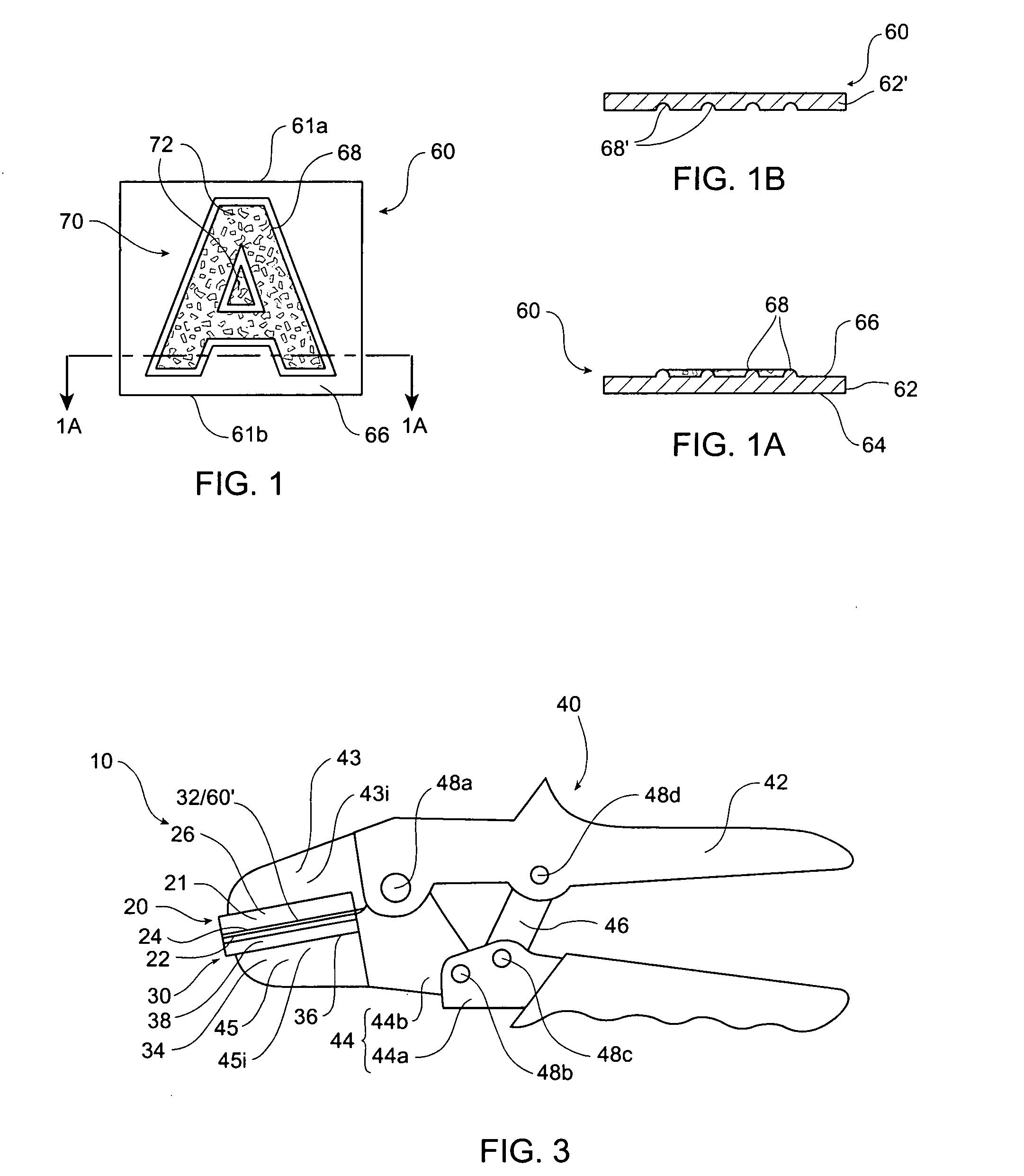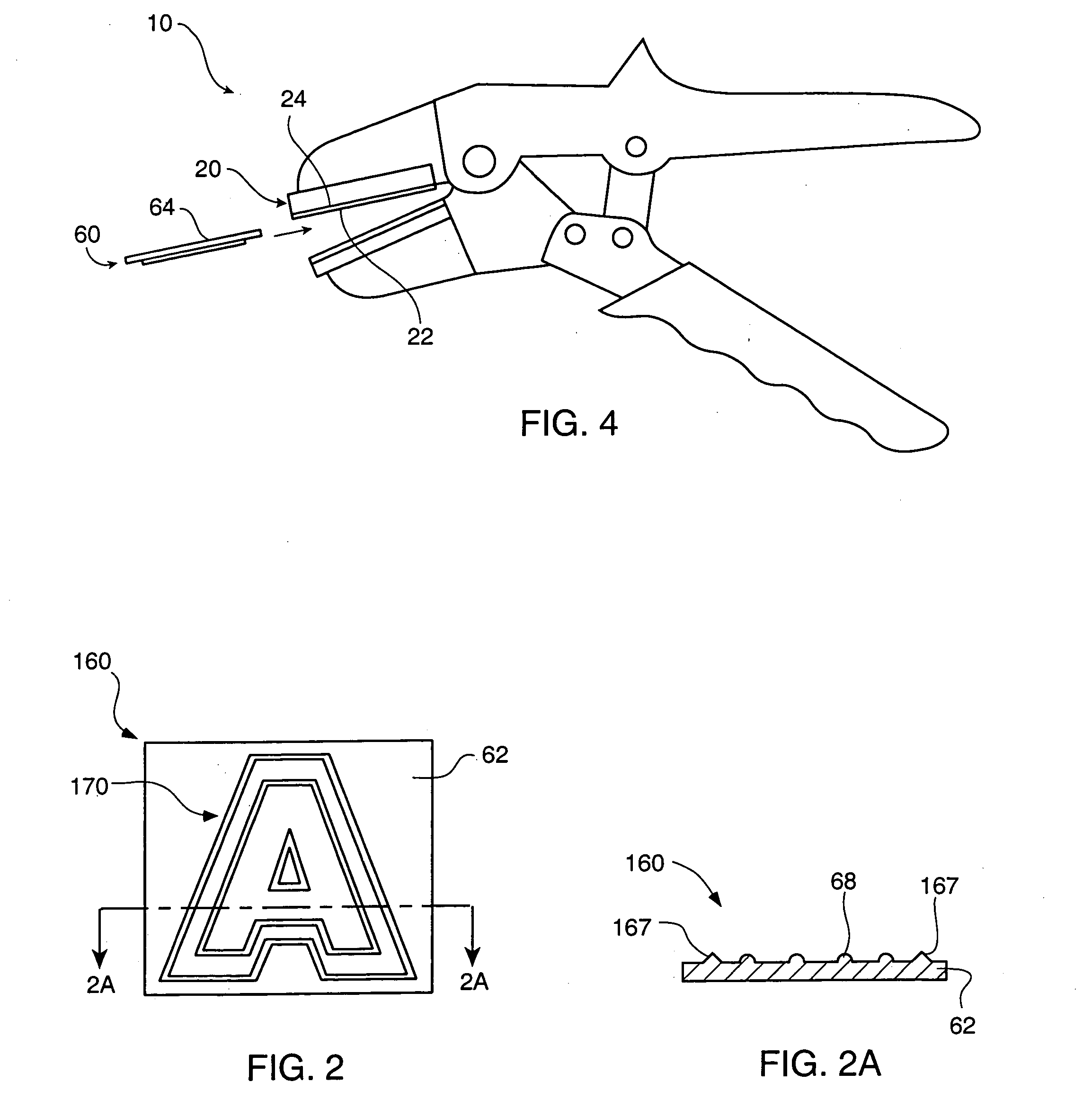Embossing system,components thereof, and methods
a technology of embossing system and embosser, which is applied in the field of embossing system, can solve the problems of large die cutters, expensive machines, and limited use of the embosser of the '693 patent for embossing a variety of different images, designs or patterns
- Summary
- Abstract
- Description
- Claims
- Application Information
AI Technical Summary
Benefits of technology
Problems solved by technology
Method used
Image
Examples
Embodiment Construction
[0040] With reference to FIGS. 1 and 1A, an embossing die 60 is illustrated. Embossing die 60 includes a thin, plate 62 with a back side 64 and embossing elements 68 protruding a short distance from a front side 66 of plate 62. Plate 62 may comprise a substantially planar member, with back side 64 being a substantially planar surface thereof. Plate 62 and embossing elements 68 thereof may comprise a substantially unitary structure. Embossing elements 68 forms a design or pattern 70 to be impressed, or embossed, into a sheet of material.
[0041] The lateral dimensions of each embossing element 68, as well as the material from which each embossing element 68 is formed, preferably impart embossing elements 68 with the ability to withstand repeated use while minimizing the amount of pressure required for forming an indentation in a sheet of material. The shape of each embossing element 68 may be configured to prevent embossing element 68 from cutting through the sheet of material. As an ...
PUM
 Login to View More
Login to View More Abstract
Description
Claims
Application Information
 Login to View More
Login to View More - R&D
- Intellectual Property
- Life Sciences
- Materials
- Tech Scout
- Unparalleled Data Quality
- Higher Quality Content
- 60% Fewer Hallucinations
Browse by: Latest US Patents, China's latest patents, Technical Efficacy Thesaurus, Application Domain, Technology Topic, Popular Technical Reports.
© 2025 PatSnap. All rights reserved.Legal|Privacy policy|Modern Slavery Act Transparency Statement|Sitemap|About US| Contact US: help@patsnap.com



